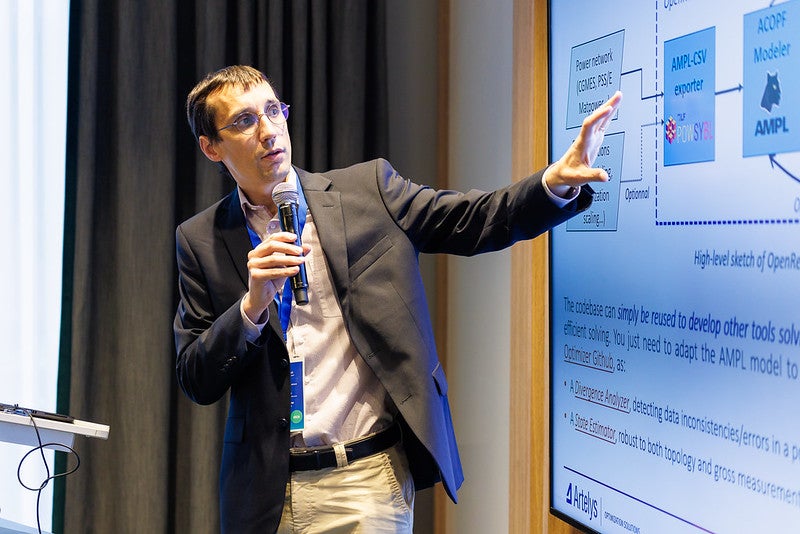LF Energy Summit Recap and Video: The Business Model of a Service Provider
At LF Energy Summit 2024 in Brussels, Nicolas Omont of Artelys presented a case on the business model of open source in power grids, particularly for service providers. His talk highlighted Artelys’ role in the CorNet project, its use of open source tools, and the broader implications for business models in the energy sector. Here’s a breakdown of the key insights from his presentation (full video follows at the end):
The CorNet Project and Open Source for Power Grids
Artelys contributes grid-related computation modules to the CorNet project, which coordinates regional grid operations across Europe. The project focuses on integrating grid forecasts from various Transmission System Operators (TSOs) into a common grid model. From there, the project runs security analyses and coordinates remedial actions when needed, using tools optimized for grid management.
A significant component of this process is the use of open source tools, particularly PowSyBl, a software initially developed by RTE, the French TSO. Artelys teamed up with Unicon to use this open source tool as part of their winning bid for the CorNet project, making a strong case for the viability of open source in industrial-grade grid management.
Benefits of Open Source
One of the most notable aspects of this collaboration is the mutually beneficial arrangement. Artelys develops open source tools for CorNet while RTE benefits from the updates and improvements without shouldering the full burden of development. This shared development model not only reduces costs for RTE but also allows Artelys to offer the same tools to other clients, even though they do not own the intellectual property (IP).
As Omont pointed out, this approach enables Artelys to reuse much of the code across different projects and clients. The development of Open Load Flow by Cornet is a prime example; more than half of the development was funded by CorNet, and the results were made available open source, creating a win-win situation for both the service provider and the customer.
The Business Model: Service-Based, Modular, and Collaborative
The core of Omont’s message was about how service providers like Artelys can build a sustainable business around open source. He stressed that the model is service-based, not product-based. While Artelys does not own the IP, it can still build custom tools for clients using its modular software.
However, there are challenges. One major hurdle is competition with proprietary software companies that spread development costs across multiple customers. To remain competitive, Omont noted that open source service providers must find a critical mass of customers – about four or five for each module – to share development and maintenance costs.
This approach also requires that clients be more proactive. Since there are no license fees or guaranteed continuous development as in proprietary software, clients must invest in the long-term sustainability of the tools. They have to take responsibility for steering the development direction, especially when it comes to non-functional features that might not seem immediately necessary.
Challenges and Limitations
While the open source model offers significant benefits, Omont was candid about its limitations. Without a continuous stream of license fees, service providers like Artelys have less capital to invest in future developments compared to proprietary software companies. This makes it harder to anticipate future needs and develop features that clients might not yet realize they need.
Additionally, the modular, customizable nature of open source tools means that they are not “off-the-shelf” products that can be quickly implemented. Every project requires some level of customization, which can be a time-consuming process.
